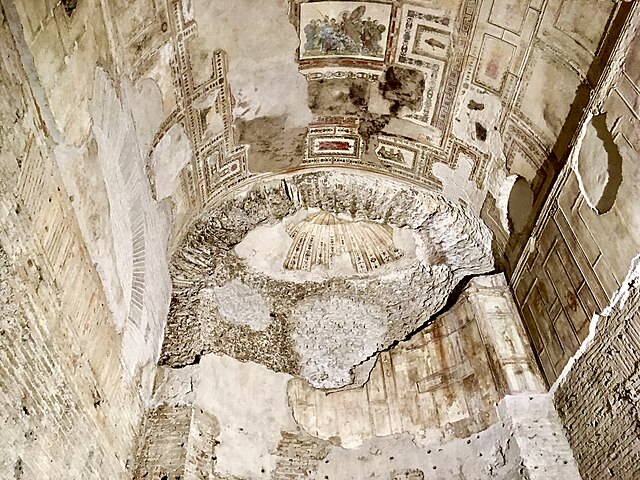A Roman firefighting squad called the Vigiles was expanded in 60 A.D., by what emperor?
Don't scroll until you've answered.

Duh! is a weekly column that gives circuitous answers to obvious questions. If you dig it, you can find 100 more of these essays in the Geeks Who Drink book, Duh!.
Would you believe that more Ancient Roman graffiti praises Nero than any other emperor? That he shut down gladiatorial combat, and funded artistic and athletic competitions in its place? That he wasn’t even in Rome at the time of the Great Fire, and in fact hurried back to aid relief efforts?
A great-grandson of Augustus through both parents (eww), born at the end of 37 CE, Nero was two when his mom was exiled, three when his dad died, and still three when his mother was brought back from exile thanks to the sudden emperorship of her uncle Claudius. Agrippina set about becoming the ultimate stage mom. Over the next decade and a half, she:
- Poisoned her second husband, and had Claudius’s wife killed.
- Married Claudius (eww), and persuaded him to favor Nero as heir over his own son Britannicus.
- Eliminated all her opponents in the court, poisoned Claudius, and poisoned Britannicus.
And so Nero became emperor in 54, a couple months before his 17th birthday–and not at all because of his ambitions.1 But he immediately began annoying Agrippina by making his own, very popular decisions. He reduced taxes, abolished capital punishment, gave slaves the right to sue their masters, and generally didn’t retaliate against those who were plotting against him. As long as he caught wind before it actually happened, no harm, no foul, right?
But then there was Rome’s Great Fire of 64. It burned for nine days, destroying about a fifth of the city and damaging more than two-thirds. While he helped Romans pick up the pieces, Nero, a lover of arts and architecture,2 also jacked up taxes in order to fund his grandiose visions for the rebuilding–including a palace complex for himself, the Golden House, that would cover one-third of the city.3 It’s little wonder that people started spreading rumors the emperor had set the fire himself.

image credit: Andy Montgomery
In fact, historians’ main beef with Nero was that he was too artsy, and that indulging those pretensions kept him from, you know, effectively governing the ungainly empire. In 66, high on the achievement of subduing the Parthians to the east (and not overly concerned about the Jewish revolt in Jerusalem), Nero took a 15-month sabbatical to tour Greece, walking around barefoot and freeing ancient cities that particularly impressed him.
He came back even more dedicated to advancing his own theatrical career: “I have seen him onstage playing pregnant women and slaves about to be executed,” complained Vindex, the governor of Gaul. Nero laughed it off: “I have only to appear and sing to have peace once more in Gaul.” When a rebellious commander in Egypt cut off the city’s grain supply, the senate became more supportive of Vindex’s revolt. Failing to escape Rome, Nero most likely killed himself. He was 31.
The lower classes never forgot him though; for a long time they left flowers at his grave, and even spread rumors he was still alive. Not bad for a fire-fiddler!
- Agrippina died in 59. Historians–all anti-Nero, you must remember–say that he had her killed. Nero–who was very pro-Nero–insisted that she took her own life after the discovery of her plot against Nero himself.
- And a plucker of the lyre, by the way; bowed instruments like the fiddle didn’t exist until at least the 9th century.
- Nero grabbed 200 acres in the city center. The whole city, inside the 5th-century BCE Servian Walls, was just 610 acres. The complex didn’t survive long after Nero’s death; in fact, a decade later, its artificial lake would become the site of the Colosseum.
